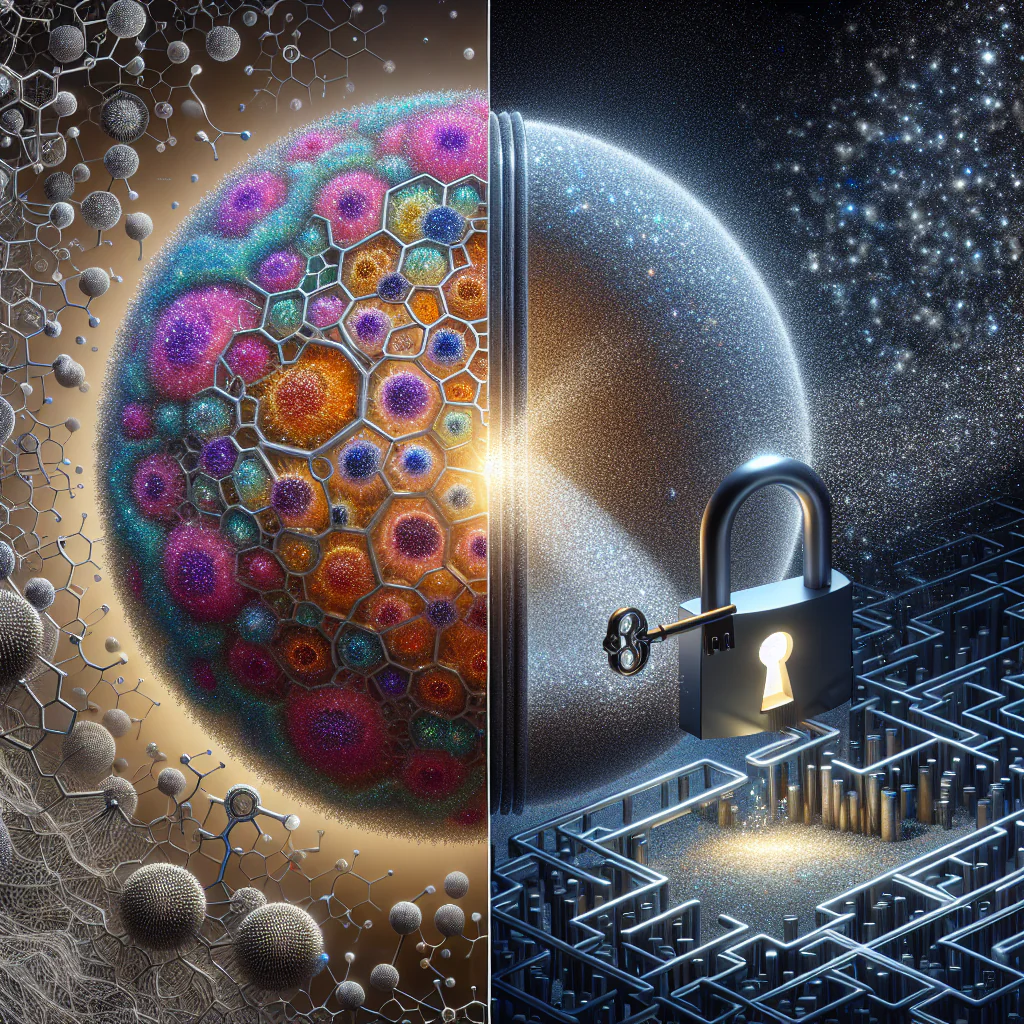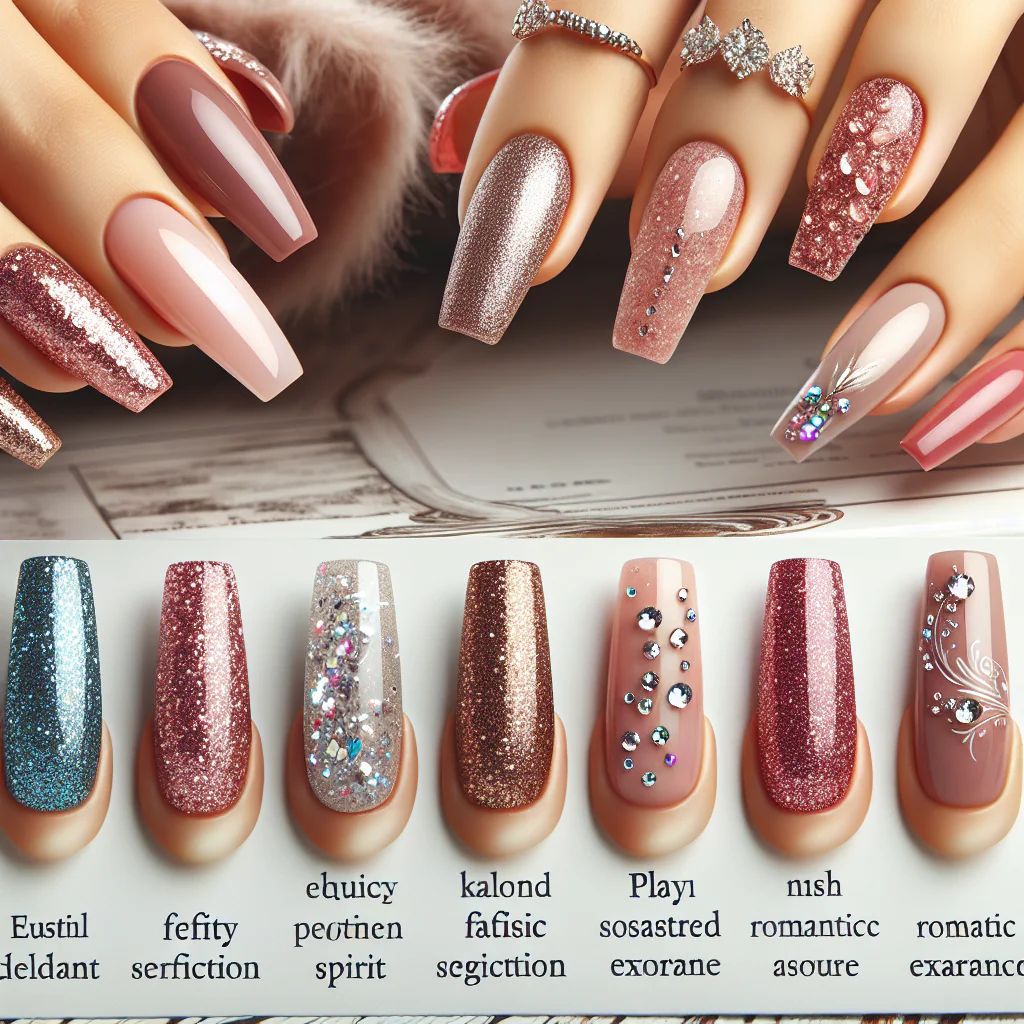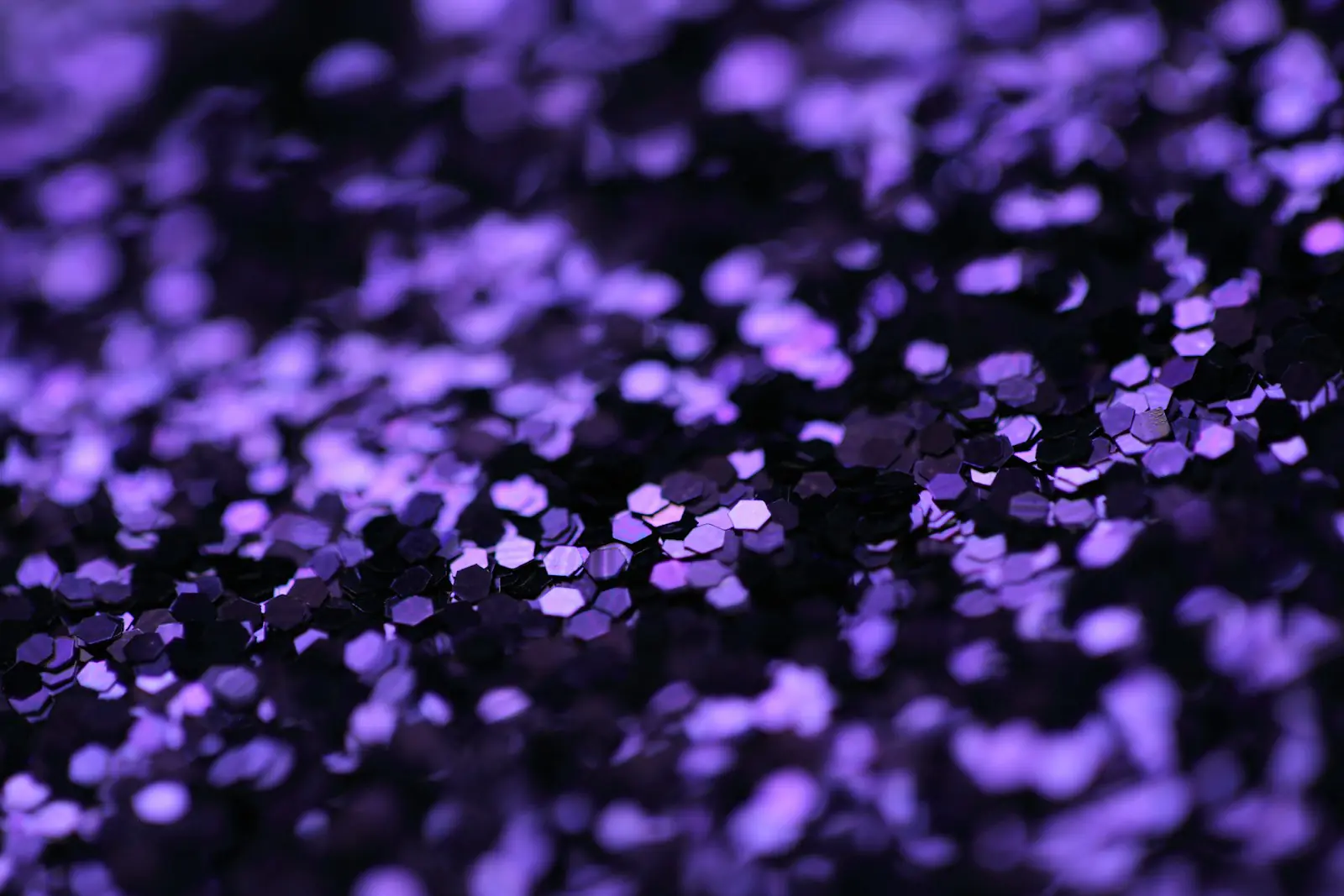-
Table of Contents
“Experience the Magic: The Science of Extra Fine Glitter for Effortless, Flawless Application!”
Discover the secret to a flawless finish with our Extra Fine Glitter! Experience the science behind its smooth application and elevate your crafting projects to the next level. Don’t miss out—[explore our Extra Fine Glitter now](https://www.glittersmall.com/extra-fine-glitter/) and transform your creations!
Introduction
Extra Fine Glitter is a popular choice in various applications, from cosmetics to crafts, due to its ability to create a shimmering effect with a smooth finish. The science behind its smooth application lies in the particle size, which is significantly smaller than standard glitter, allowing for a more even distribution and adherence to surfaces. The unique properties of the binding agents used in conjunction with Extra Fine Glitter also play a crucial role, enhancing its ability to adhere without clumping. Additionally, the reflective qualities of the finely milled particles contribute to a more luminous appearance, making it ideal for achieving a flawless, polished look in any project. Understanding these scientific principles can help users maximize the effectiveness of Extra Fine Glitter in their creative endeavors.
The Chemistry of Extra Fine Glitter: Understanding Particle Size and Texture
The application of Extra Fine Glitter in various artistic and cosmetic endeavors is not merely a matter of aesthetics; it is deeply rooted in the chemistry of its composition. Understanding the particle size and texture of Extra Fine Glitter reveals the science that contributes to its smooth application. At the core of this phenomenon lies the size of the glitter particles, which typically range from 0.008 to 0.015 inches in diameter. This minuscule size is crucial, as it allows the glitter to adhere seamlessly to surfaces, creating a uniform and lustrous finish.
The small particle size of Extra Fine Glitter is a result of meticulous manufacturing processes that involve cutting sheets of plastic or other materials into tiny fragments. This precision ensures that each particle maintains a consistent shape and size, which is essential for achieving a smooth application. When applied, these tiny particles can easily fill in the gaps on a surface, whether it be skin, paper, or fabric, thereby enhancing the overall visual effect. The uniformity in size not only contributes to the aesthetic appeal but also plays a significant role in the tactile experience of the glitter.
Moreover, the texture of Extra Fine Glitter is another critical factor that influences its application. The surface of each glitter particle is often treated or coated to enhance its reflective properties and to improve adhesion. For instance, many manufacturers apply a layer of color or a reflective coating that not only intensifies the sparkle but also helps the glitter to bond more effectively to the medium it is applied to. This treatment can involve the use of various chemical compounds that enhance the glitter’s durability and resistance to fading, ensuring that the vibrant colors remain intact over time.
In addition to particle size and texture, the chemical composition of Extra Fine Glitter also plays a vital role in its application. Most glitter is made from materials such as polyethylene terephthalate (PET), which is a type of plastic known for its strength and flexibility. This material allows the glitter to maintain its shape and resist breaking during application, which is particularly important when using brushes or sponges. The flexibility of PET also contributes to the smooth application, as it allows the glitter to conform to the contours of the surface it is being applied to, resulting in a more even distribution.
Furthermore, the interaction between the glitter and the adhesive used during application cannot be overlooked. The choice of adhesive can significantly affect how well the glitter adheres to a surface. For instance, water-based adhesives may provide a different texture and finish compared to oil-based ones. Understanding these interactions is essential for artists and cosmetic professionals who seek to achieve specific effects with their glitter applications.
In conclusion, the science behind Extra Fine Glitter‘s smooth application is a fascinating interplay of particle size, texture, and chemical composition. Each of these elements contributes to the overall performance of the glitter, ensuring that it not only looks stunning but also applies seamlessly to various surfaces. As artists and consumers continue to explore the creative possibilities of Extra Fine Glitter, a deeper understanding of its scientific properties will undoubtedly enhance their ability to utilize this versatile material effectively. Thus, the chemistry of Extra Fine Glitter is not just a technical detail; it is a fundamental aspect that enriches the artistic experience.
Application Techniques for Extra Fine Glitter: Achieving a Flawless Finish
The application of Extra Fine Glitter can transform a variety of surfaces, adding a touch of elegance and sparkle that captivates the eye. However, achieving a flawless finish requires an understanding of the techniques that enhance the glitter’s adherence and appearance. To begin with, preparation is crucial. The surface to which the glitter will be applied must be clean, dry, and free from any debris or oils that could hinder adhesion. For optimal results, it is advisable to use a primer or adhesive specifically designed for glitter application. These products not only provide a suitable base but also enhance the vibrancy of the glitter, ensuring that the final result is both striking and durable.
Once the surface is prepared, the next step involves selecting the appropriate application method. There are several techniques available, each offering unique advantages depending on the desired outcome. For instance, using a brush can allow for precise application, particularly in detailed areas or when creating intricate designs. A soft, flat brush is often recommended, as it can distribute the glitter evenly without clumping. When using this method, it is essential to work in small sections, applying the adhesive and then immediately sprinkling the glitter over the wet surface. This ensures that the glitter adheres properly and minimizes the risk of uneven coverage.
Alternatively, for larger areas, a spray adhesive can be an effective choice. This method allows for a more uniform application, as the adhesive can cover a broader surface area quickly. When using spray adhesive, it is important to hold the can at the recommended distance from the surface to avoid oversaturation, which can lead to a messy finish. After spraying the adhesive, it is advisable to wait a few moments for it to become tacky before applying the glitter. This waiting period is crucial, as it allows the adhesive to reach an optimal state for bonding with the glitter particles.
In addition to these methods, using a glitter applicator can also enhance the application process. These tools are designed to dispense glitter evenly and can be particularly useful for achieving a controlled application. By gently tapping or shaking the applicator, one can create a fine mist of glitter that covers the surface uniformly. This technique is especially beneficial for projects requiring a delicate touch, such as crafting or decorating small items.
Moreover, layering can significantly enhance the depth and richness of the glitter effect. By applying multiple thin layers of glitter rather than a single thick layer, one can achieve a more sophisticated finish. After the first layer has dried, a light application of adhesive can be added before sprinkling on additional glitter. This method not only intensifies the sparkle but also helps to secure the glitter in place, reducing the likelihood of fallout over time.
Finally, sealing the glitter with a clear topcoat is an essential step that should not be overlooked. A sealant not only protects the glitter from wear and tear but also enhances its shine, ensuring that the finished product remains vibrant and eye-catching. By following these application techniques, one can master the art of using Extra Fine Glitter, resulting in a flawless finish that elevates any project. Through careful preparation, the right tools, and thoughtful layering, the science behind Extra Fine Glitter’s smooth application becomes evident, allowing for stunning results that are both professional and visually appealing.
The Role of Adhesives in the Smooth Application of Extra Fine Glitter
The application of Extra Fine Glitter is a delicate process that hinges significantly on the role of adhesives. Understanding the science behind this relationship is essential for achieving a smooth and even application, which is often desired in various artistic and decorative endeavors. Adhesives serve as the crucial intermediary between the glitter and the surface to which it is applied, ensuring that the glitter adheres properly while maintaining its aesthetic appeal.
To begin with, the choice of adhesive is paramount. Different types of adhesives possess unique properties that can influence the final appearance of the glitter application. For instance, water-based adhesives are often favored for their ease of use and clean-up, making them suitable for projects involving children or those who prefer a less toxic option. Conversely, solvent-based adhesives may provide a stronger bond, which is particularly beneficial for outdoor applications or surfaces that experience significant wear and tear. The selection of the appropriate adhesive not only affects the adhesion of the glitter but also its overall finish, as some adhesives may dry clear while others can leave a residue that alters the visual effect.
Moreover, the viscosity of the adhesive plays a critical role in the application process. A thicker adhesive may allow for more control during application, enabling the user to create intricate designs without the risk of the glitter running or clumping. On the other hand, a thinner adhesive can facilitate a more even distribution of glitter, particularly when working on larger surfaces. This balance between viscosity and application technique is essential for achieving a smooth finish, as it directly impacts how the glitter settles and adheres to the surface.
In addition to viscosity, the drying time of the adhesive is another factor that cannot be overlooked. Fast-drying adhesives can be advantageous in situations where time is of the essence; however, they may not allow for adjustments once the glitter is applied. Conversely, slower-drying adhesives provide the opportunity to reposition glitter or correct any mistakes, which can be particularly beneficial for intricate designs. This aspect of adhesive selection underscores the importance of planning and understanding the specific requirements of a project before beginning the application process.
Furthermore, the interaction between the adhesive and the glitter itself is a fascinating area of study. Extra Fine Glitter, characterized by its small particle size, can behave differently depending on the type of adhesive used. For example, some adhesives may cause the glitter to clump together, resulting in an uneven application. To mitigate this issue, it is often recommended to apply the adhesive in thin layers, allowing each layer to dry before adding more glitter. This technique not only enhances the smoothness of the application but also allows for greater control over the final appearance.
Ultimately, the successful application of Extra Fine Glitter relies heavily on the careful selection and use of adhesives. By understanding the properties of different adhesives, including their viscosity and drying times, artists and crafters can achieve a smooth and visually appealing finish. The interplay between adhesive and glitter is a testament to the intricate science behind seemingly simple artistic techniques. As one delves deeper into this subject, it becomes clear that the right adhesive can elevate a project from ordinary to extraordinary, ensuring that the sparkle of Extra Fine Glitter shines through in all its glory.
Q&A
1. **Question:** What is the primary reason Extra Fine Glitter applies smoothly?
**Answer:** Extra Fine Glitter consists of smaller particles that create a more even surface, allowing for better adhesion and a smoother finish when applied.
2. **Question:** How does the shape of Extra Fine Glitter contribute to its application?
**Answer:** The uniform shape and size of Extra Fine Glitter particles reduce clumping and allow for a more consistent distribution, enhancing the smoothness of the application.
3. **Question:** What role does the binder play in the application of Extra Fine Glitter?
**Answer:** The binder helps to hold the glitter particles in place, ensuring they adhere evenly to the surface and preventing uneven application or fallout.
Conclusion
The smooth application of Extra Fine Glitter can be attributed to its small particle size, which allows for even distribution and adherence to surfaces. The use of specialized adhesives and application techniques further enhances its ability to create a seamless, shimmering effect. Additionally, the reflective properties of the glitter contribute to a visually appealing finish, making it a popular choice in various artistic and cosmetic applications. Overall, the combination of physical properties and application methods ensures that Extra Fine Glitter achieves a flawless and smooth appearance.










